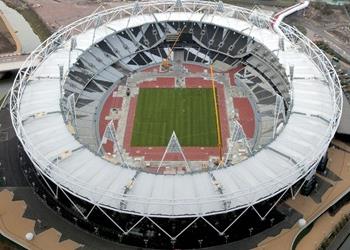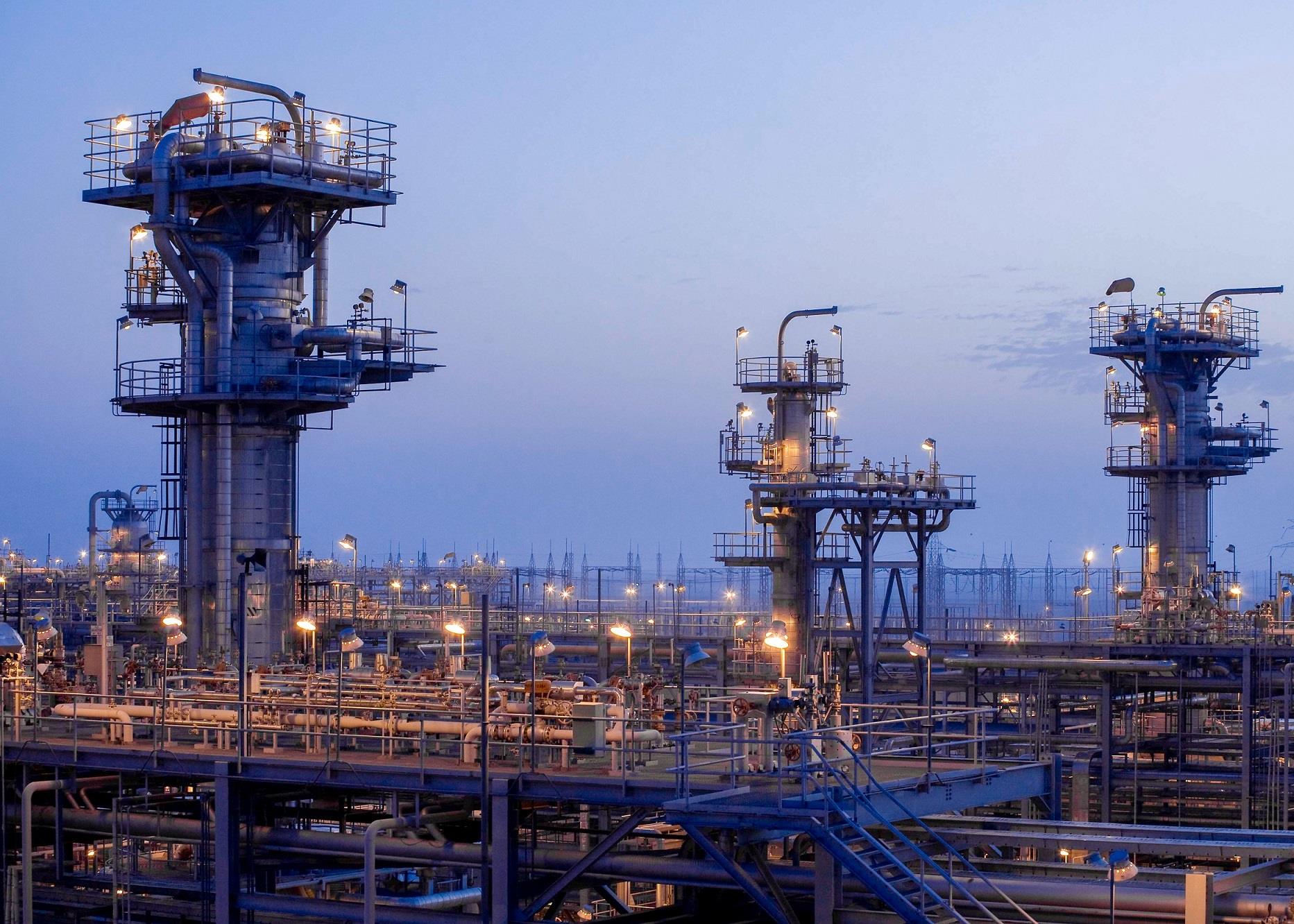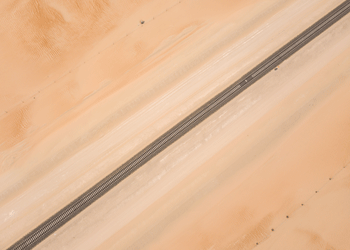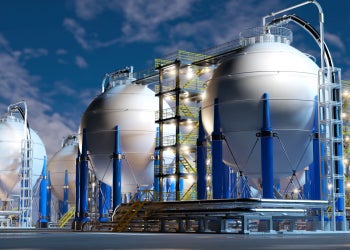Transport projects driven by key trends
24 December 2024

Two key trends are driving the region’s transport projects. The first is a longstanding competitive advantage based on the Middle East’s strategic location, while the second is a renewed drive for regional integration.
 Over the past 20 years, the Middle East’s aviation sector has been transformed. Dubai has established itself as the world’s busiest international airport, while other regional airports have become significant aviation hubs, albeit on a smaller scale.
Over the past 20 years, the Middle East’s aviation sector has been transformed. Dubai has established itself as the world’s busiest international airport, while other regional airports have become significant aviation hubs, albeit on a smaller scale.
The logic is simple. The Gulf is within an eight-hour flight of most major destinations and two-thirds of the world’s population. It is also strategically located between established markets in Europe and North America and emerging markets in Africa and Asia.
Over the past decade, major projects have been undertaken to upgrade capacity and harness more of the global aviation market. As these projects were completed, 2024 became a turning point and the focus pivoted to two new projects that will be the largest airports in the region by far.
Major airports
Riyadh’s King Salman International airport was launched at the end of 2022. The airport, which will be built to replace the existing King Khalid International airport, aims to accommodate up to 120 million passengers by 2030 and 185 million by 2050.
In 2024, the project took several steps forward: it appointed UK-based Mace as a delivery partner; tendered contracts for delivery partner roles for the terminals, airside works and landside infrastructure; and began to approach contractors for construction work on the project.
The region’s other major airport scheme is the $35bn expansion of Dubai’s Maktoum International airport. The project, which had been planned for over a decade, had new designs approved in April. It will have a passenger handling capacity of 260 million passengers annually – the world’s largest.
Early infrastructure contracts have been awarded since the designs were approved, and contractors have been briefed on main construction packages that are expected to start in 2025.
 Building connections
Building connections
The other key drive for the region’s transport projects is integration. Following the 2021 Al-Ula agreement, the GCC has been pressing to establish closer trade ties to accompany closer political links. At the same time, seaborne trade has been threatened by logistics bottlenecks and, more recently, by Houthi attacks in the Red Sea. These two factors combined have led to a push to build better overland transport links across the region.
The best demonstration of the renewed focus on overland transport links connecting the region came in April 2024, when Oman-Etihad Rail Company awarded contracts for the Hafeet Rail project connecting the UAE with Oman.
The estimated AED5.5bn ($1.5bn) design-and-build contract for the civil works was secured by Abu Dhabi-based National Projects Construction, National Infrastructure Construction Company and Tristar Engineering & Construction with Oman’s Galfar Engineering & Contracting. A contract for the rolling stock systems and integration contracts went to German firm Siemens and Egyptian contractor Hassan Allam Construction.
The speed at which the Hafeet Rail contracts were awarded was an anomaly, as other major rail projects have taken much longer to be awarded and move into construction. This has become a source of frustration for companies that invest considerable time and financial resources in tendering for contracts.
One of the longest-running contract negotiations in the region is for the $7bn Saudi Landbridge project that will link the western Red Sea coast of the kingdom to the eastern Gulf coast through Riyadh.
Saudi China Landbridge Consortium signed a memorandum of understanding to develop the project in October 2018. After six years of negotiations, there is now an expectation that construction will start in 2025, although there have been false dawns in the past.
The Mecca Metro project also has a long history. MEED reported in June 2024 that a feasibility study for the $8bn first phase of the scheme had restarted. Contracts for construction work were tendered and close to being awarded
in 2014.
Another rail project that has been slow to progress is Bahrain’s planned metro scheme. Launched in 2021, Bahrain’s Transportation & Telecommunications Ministry prequalified seven groups for the contract to deliver the first phase of the network on a public-private partnership basis in early 2023. Since then, it is understood that the project has shifted back to the study phase as the government considers the best way to proceed with the scheme.
 Airport projects also take time. The construction contract for the substructure of Al-Maktoum International airport was close to being awarded in early 2020 before the Covid-19 pandemic. That tender then ceased to be a priority as the focus for Dubai’s aviation sector shifted to supporting airlines Emirates and Flydubai and airport operations during the lockdown period, enabling the sector to reopen more quickly than its competition.
Airport projects also take time. The construction contract for the substructure of Al-Maktoum International airport was close to being awarded in early 2020 before the Covid-19 pandemic. That tender then ceased to be a priority as the focus for Dubai’s aviation sector shifted to supporting airlines Emirates and Flydubai and airport operations during the lockdown period, enabling the sector to reopen more quickly than its competition.
Now, expanding Dubai’s airport capacity is once again a strategic priority. Dubai International’s constrained site means it cannot add to its two existing runways, which means it is becoming vulnerable to being overtaken by other emerging hubs in the region.
At the tail end of the construction process, the completion of large-scale transportation projects is often delayed. The largest ongoing transport scheme in the region by value is Riyadh’s $23bn six-line metro network, for which construction contracts were awarded in 2013. It was rumoured in late 2024 that it would open by the end of the year, although no opening date has been confirmed.
There are examples of rail projects being completed more quickly. The Doha Metro network was opened as planned before Qatar hosted football’s Fifa World Cup 2022. The second and third phases of the UAE’s Etihad Rail network were also completed promptly, which has allowed Etihad Rail to focus on other schemes such as the passenger rail service, the Hafeet Rail project and the proposed high-speed rail scheme.
Like railways, there are examples of delayed airport schemes that ran over budget. The Midfield Terminal Complex at Abu Dhabi International airport was delayed for years, as was the opening of the first phase of Hamad International airport in Qatar and Muscat International airport in Oman.
Although delays were a significant problem for the construction companies involved in the projects, it is worth
noting that once the projects were completed, they were broadly praised for their quality and step-change in passenger experience.

Future focus
Looking ahead to 2025, the region’s strategic location and competitive edge in aviation will remain, which will support the business case for airport projects. The more interesting challenge will be the region’s ability to fund projects as large as King Salman International airport and Al-Maktoum International airport.
In Saudi Arabia, project spending is being more closely managed than it was in the past, and although people close to the King Salman International airport scheme insist that it remains a strategic priority, the same can be said of many other major projects in the kingdom.
There are also funding questions to be answered for Al-Maktoum International airport. Dubai does not have the financial resources to match Saudi Arabia, and with other infrastructure spending commitments – such as the $5bn Blue Line extension to Dubai Metro and an $8bn stormwater drainage scheme – funding the $35bn airport project will be a challenging undertaking.
High-level concerns are also present for transport links within the region. The warm relations that countries within the region enjoy today may change in the future, and should that happen, the impetus to complete regional rail links will quickly subside.
On the operational level, securing contractors and resources from the supply chain will be an ongoing problem. The record levels of construction awards in recent years mean that construction companies can afford to be selective about the projects they work on, and when they do choose to bid, they no longer feel obliged to slash their prices.
According to regional projects tracker MEED Projects, there were $37.8bn of transport contract awards in 2023, up from the $36.8bn of awards recorded in 2022.
By the end of October 2024, there had been $30.8bn of transport project contract awards. If extrapolated, this suggests a $37bn total for 2024, which is only slightly below the 2023 annual total.
The ability of contractors to hold firm when bidding was evidenced in October 2024, when initial offers were submitted for Dubai Metro’s Blue Line extension. The lowest bids were about $1bn over the project’s official $5bn budget, and a subsequent round of revised prices did not reduce that gap significantly.
Dubai Metro is just one of several major rail schemes due to be awarded soon. As well as the Saudi Landbridge, contractors are also competing for a contract to complete the extension to Riyadh Metro’s Line 2, which is at the bid evaluation stage. A contract to build an entirely new Line 7 was also tendered in September 2024 with a closing date in March 2025.
While it is not entirely reliant on these metro projects and the airports in Riyadh and Dubai moving into construction, their progress will go a long way to determining whether 2025 is a good year or not for transport projects in the region.
Exclusive from Meed
-
 Municipality seeks consultants for Dubailand drainage project
Municipality seeks consultants for Dubailand drainage project10 December 2025
-
 Riyadh prepares Qiddiya National Athletics Stadium tender
Riyadh prepares Qiddiya National Athletics Stadium tender9 December 2025
-
 Contractors submit prices to Adnoc Gas for Ruwais NGL project
Contractors submit prices to Adnoc Gas for Ruwais NGL project9 December 2025
-
 Saudi Arabia and Qatar sign high-speed rail link agreement
Saudi Arabia and Qatar sign high-speed rail link agreement9 December 2025
-
 Oman green hydrogen projects cancelled
Oman green hydrogen projects cancelled8 December 2025
All of this is only 1% of what MEED.com has to offer
Subscribe now and unlock all the 153,671 articles on MEED.com
- All the latest news, data, and market intelligence across MENA at your fingerprints
- First-hand updates and inside information on projects, clients and competitors that matter to you
- 20 years' archive of information, data, and news for you to access at your convenience
- Strategize to succeed and minimise risks with timely analysis of current and future market trends

Related Articles
-
 Municipality seeks consultants for Dubailand drainage project
Municipality seeks consultants for Dubailand drainage project10 December 2025
Register for MEED’s 14-day trial access
Dubai Municipality has invited consultants to prequalify for a contract to provide supervision services on a major drainage infrastructure project serving developed communities in Dubailand.
The sewerage and stormwater drainage project, listed under the code DS-204-S1, is being procured through the government’s Sewerage and Recycled Water Projects Department (SRPD).
The bid submission deadline is 8 January.
The consultancy contract follows the issuance in November of the related construction package, DS-204-C1, for which the municipality invited contractors to prequalify.
The scope includes sewage gravity pipelines with diameters of up to 2,200mm, a sewage lift station with a capacity of three cubic metres a second, and a 1,400mm-diameter sewage rising main that will take pumped sewage from the lift station to the main sewer network.
The bid submission deadline for the construction package is also 8 January 2026.
The tenders form part of Dubai’s wider investment in sewerage expansion, including the $8bn Tasreef programme, for which several projects have moved into the execution phase in recent months.
Once completed, the Tasreef system is expected to increase Dubai’s overall drainage capacity by about 700% and provide daily stormwater treatment capacity exceeding 20 million cubic metres.
 READ THE DECEMBER 2025 MEED BUSINESS REVIEW – click here to view PDF
READ THE DECEMBER 2025 MEED BUSINESS REVIEW – click here to view PDFProspects widen as Middle East rail projects are delivered; India’s L&T storms up MEED’s EPC contractor ranking; Manama balances growth with fiscal challenges
Distributed to senior decision-makers in the region and around the world, the December 2025 edition of MEED Business Review includes:
> AGENDA 1: Regional rail construction surges ahead> INDUSTRY REPORT 1: Larsen & Toubro climbs EPC contractor ranking> INDUSTRY REPORT 2: Chinese firms expand oil and gas presence> CONSTRUCTION: Aramco Stadium races towards completion> RENEWABLES: UAE moves ahead with $6bn solar and storage project> INTERVIEW: Engie pivots towards renewables projects> BAHRAIN MARKET FOCUS: Manama pursues reform amid strainTo see previous issues of MEED Business Review, please click herehttps://image.digitalinsightresearch.in/uploads/NewsArticle/15218750/main.jpg -
 Riyadh prepares Qiddiya National Athletics Stadium tender
Riyadh prepares Qiddiya National Athletics Stadium tender9 December 2025

Register for MEED’s 14-day trial access
Saudi gigaproject developer Qiddiya Investment Company (QIC) is expected to float a tender soon for the construction of the estimated SR7bn ($1.8bn) National Athletics Stadium at its Qiddiya entertainment city development.
MEED understands that the prequalification process has reached an advanced stage and the tender for the main contract is likely to be issued within a few weeks.
The multipurpose stadium will cover an area of approximately 182,000 square metres and its design is inspired by the London Olympic Stadium.
In September, MEED exclusively reported that QIC had begun the procurement process for the kingdom’s next major sporting destination, having received expressions of interest from contractors for the project.
UK-based HOK is the project’s lead design consultant. It is supported by Canadian engineering firm WSP and Germany’s Schlaich Bergermann Partner.
UK-headquartered WT Partnership is serving as the project’s cost consultant.
The stadium will be located within the Qiddiya Sports Park cluster and is expected to be completed by 2030.
In December 2020, Saudi Arabia was selected to host the 2034 Asian Games. The 22nd edition of the event will be held in Riyadh from 29 November to 14 December 2034.
Saudi Arabia is also set to host the Asian Winter Games in 2029. In October 2022, the Trojena development at Neom, in the northwest of the country, was selected to host the ninth edition of the event.
The National Athletics Stadium is one of several major projects within the wider Qiddiya development. Others include an e-games arena, Prince Mohammed Bin Salman Stadium, a performing arts centre, a motorsports track, Dragon Ball and Six Flags theme parks and Aquarabia waterpark.
The project is a key part of Riyadh’s strategy to boost leisure tourism in the kingdom. According to UK analytics firm GlobalData, leisure tourism in Saudi Arabia has experienced significant growth in recent years.
Domestic leisure tourism trips increased to 33.76 million in 2023, up from 16.74 million in 2018. International tourist arrivals for recreational purposes increased by 600% from 2018 to 2023.
Image: Buro Happold
https://image.digitalinsightresearch.in/uploads/NewsArticle/15217660/main.jpg -
 Contractors submit prices to Adnoc Gas for Ruwais NGL project
Contractors submit prices to Adnoc Gas for Ruwais NGL project9 December 2025

Register for MEED’s 14-day trial access
Contractors have submitted commercial proposals to Adnoc Gas for engineering, procurement and construction (EPC) work as part of a design‑update competition for a project to install a fifth natural gas liquids (NGL) fractionation train at its Ruwais gas processing facility in Abu Dhabi.
The fifth NGL fractionation train will have an output capacity of 22,000 tonnes a day (t/d), or about 8 million tonnes a year.
Adnoc Gas, the natural gas processing business of Abu Dhabi National Oil Company (Adnoc Group), has adopted the design-update competition model to deliver the Ruwais NGL Train 5 project, MEED previously reported.
The design-update competition model involves the project operator selecting contractors to execute front-end engineering design (feed) work on the project. The operator selects the contractor with the most competitive feed proposal to execute EPC works on the project, while also compensating the other contestants for their work.
According to sources, contractors participating in the design-update competition for the Ruwais NGL Train 5 project submitted commercial bids for EPC works by the deadline of 8 December.
The previous deadline for price submissions was 30 November, sources said.
Adnoc Gas previously asked contractors to submit their feed technical proposals for the project in September.
In January, MEED reported that Adnoc Gas had selected the following contractors to participate in the design-update competition for the Ruwais NGL Train 5 project:
- JGC Corporation (Japan)
- Technip Energies (France)
- Tecnimont (Italy)
MEED previously reported that participants had submitted technical proposals for feed work on 6 October.
The scope of work on the Ruwais NGL Train 5 project covers the EPC of the following units:
- NGL fractionation plant with a capacity of 22,000 t/d, including NGL fractionation facilities, downstream treatment units, sulphur recovery units, products storage, loading facilities and associated utilities, flares and interconnection pipelines with existing facilities
- Two propane liquefied petroleum gas storage tanks and one paraffinic naphtha storage tank
- Buildings – a central control building, outstations, substations and plant amenities
- Electrical power connections. Power is to be sourced from the nearby Transco substation via a direct underground cable to the plot location.
Adnoc Gas requires the feed on the project to be updated based on the design of Ruwais NGL Train 4, which has an output capacity of 27,000 t/d and was commissioned in 2014.
In December 2021, MEED reported that Adnoc Gas, then operating as Adnoc Gas Processing, had awarded Indian contractor Larsen & Toubro Hydrocarbon Engineering the main contract for a project to enhance the capacity of its NGL trains 1-4 at the Ruwais complex.
ALSO READ: Adnoc Gas capex budget to rise to $28bn by 2029
Adnoc Gas business
Adnoc Group announced the creation of Adnoc Gas through the merger of its subsidiaries Adnoc Gas Processing and Adnoc LNG in November 2022. Adnoc Gas began operating as a commercial entity on 1 January 2023.
The consolidation of Adnoc’s gas processing and liquefied natural gas (LNG) operations into Adnoc Gas has created one of the world’s largest gas-processing entities, with a processing capacity of about 10 billion standard cubic feet of gas a day across eight onshore and offshore sites, which include its Asab, Bab, Bu Hasa, Habshan and Ruwais plants.
The company also owns a 3,250-kilometre (km) gas pipeline network to supply feedstock to its customers in the UAE. This sales gas pipeline network is being expanded to over 3,500km through the estimated $3bn Estidama project.
The company will also acquire its parent Adnoc Group’s 60% share in the Ruwais LNG terminal project at cost in the second half of 2028. UK energy producer BP, Japan’s Mitsui & Co, UK-based Shell and French energy producer TotalEnergies are the other shareholders in the project, holding 10% stakes each.
Adnoc Gas share sale
In February 2025, Adnoc Group completed a marketed offering of approximately 3.1 billion shares in Adnoc Gas, raising $2.8bn from the exercise.
The offering consisted of 3,070,056,880 shares, representing 4% of the issued and outstanding share capital of Adnoc Gas.
Following the marketed offering of shares, Adnoc Group continues to hold the majority 86% of shares in Adnoc Gas.
The parent entity listed 5% of Adnoc Gas’ shares on the Abu Dhabi Securities Exchange in March 2023, in an initial public offering from which it raised about $2.5bn.
Abu Dhabi National Energy Company (Taqa) owns the remaining 5% shares in Adnoc Gas.
https://image.digitalinsightresearch.in/uploads/NewsArticle/15217598/main2533.jpg -
 Saudi Arabia and Qatar sign high-speed rail link agreement
Saudi Arabia and Qatar sign high-speed rail link agreement9 December 2025
Register for MEED’s 14-day trial access
Saudi Arabia and Qatar have signed an agreement to build a proposed high-speed rail line connecting Riyadh and Doha.
The agreement was signed by Saudi Arabia's Transport & Logistics Services Minister, Saleh Al-Jasser, and Qatar's Transport Minister, Sheikh Mohammed Bin Abdulla Bin Mohammed Al-Thani.
The high-speed railway line will cover 785 kilometres (km) and will pass through Hofuf and Dammam, while also linking King Salman International airport and Hamad International airport.
The train's speed will exceed 300 kilometres an hour, reducing travel time between the two capitals to about two hours.
The project is slated for completion in six years. The project is expected to serve over 10 million passengers annually and create more than 30,000 direct and indirect jobs.
Riyadh and Doha relaunched a proposed rail link connecting the two countries in 2022, after agreeing to set a date to begin studying the connection.
In July of that year, France’s Systra was selected to conduct a feasibility study on the proposed scheme, as MEED reported.
A rail link connecting Saudi Arabia and Qatar was planned before the diplomatic dispute that froze relations between Riyadh and Doha from 2017 until the Al-Ula Declaration was signed in January 2021.
In 2016, Qatar Railways Company (Qatar Rail) was planning to tender the design-and-build contract for the construction of regional railways in Qatar, including the link connecting to the Saudi border.
https://image.digitalinsightresearch.in/uploads/NewsArticle/15217463/main.gif -
 Oman green hydrogen projects cancelled
Oman green hydrogen projects cancelled8 December 2025
Hydrogen Oman (Hydrom), France’s Engie and South Korea’s Pohang Iron & Steel Company (Posco) have cancelled plans to move forward with the $6.7bn HyDuqm green hydrogen project.
In a joint statement, the firms said they had reached a decision to end the scheme by mutual consent following an “in-depth assessment” of global renewable hydrogen offtake dynamics and investment frameworks.
The HyDuqm scheme was one of the largest green hydrogen projects awarded under Oman’s first auction round in 2023.
The proposed development included around 5GW of combined solar and wind capacity, supported by battery energy storage, to power an electrolysis plant producing hydrogen for conversion into green ammonia.
The facility was expected to deliver up to 1.2 million tonnes of green ammonia a year by 2030, with Posco as the main offtaker to support the decarbonisation of its steel operations.
The consortium, led by Posco (28%) and Engie (25%), had secured a 47-year concession with the state-owned Hydrom to develop a 320-square-kilometre site near the Port of Duqm.
Samsung Engineering, Korea Southern Power and Korea East-West Power had a 12% stake, with Thailand’s PTTEP holding the remaining 11%.
As recently as May, the partners were still targeting a final investment decision in 2027, subject to detailed economic and technical feasibility assessments.
Separately, a second Hydrogen project in the same area, owned by the UK’s BP, has also been cancelled. BP withdrew its plans for the Duqm green hydrogen project, which had secured land rights for the 1.5GW facility.
Hydrom managing director, Abdulaziz Al-Shidhani, told the 2025 Green Hydrogen Summit in Oman last week that only seven of the nine original projects that won land tenders were progressing.
Wider slowdown
The cancellations come amid a broader slowdown in green hydrogen development globally. Several major schemes have been postponed, scaled back or withdrawn as project economics have tightened.
In Europe, more than one-fifth of planned hydrogen projects had been stalled or cancelled by the end of 2024, according to research and consultancy firm Westwood Global Energy, largely due to high costs, uncertain demand and slow progress securing long-term offtake.
A similar trend has emerged in the GCC, where Saudi Arabia’s flagship Neom green hydrogen project has also faced offtake and market pressures despite reaching an $8.4bn financial close in 2023.
The 4GW scheme, designed to produce about 1.2 million tonnes a year of green ammonia, has reportedly struggled to secure multiple international buyers, with only limited offtake confirmed to date.
Hydrogen production costs
Global green hydrogen production costs also remain significantly higher than conventional alternatives, typically in the range of $3-$8 a kilogram compared with roughly $0.5-$2/kg for hydrogen produced from fossil fuels, leaving large export-oriented projects exposed to pricing and demand uncertainty.
The combination of elevated capital costs, slow offtake development and evolving policy frameworks has created headwinds for investment decisions across the sector.
In the joint statement, however, Hydrom said it is committed to “developing a competitive hydrogen-centric economy” aligned with Oman’s Vision 2040.
It added that projects awarded in the first two auction rounds are progressing on schedule towards the country’s target of producing more than one million tonnes a year of green hydrogen by 2030.
The company also highlighted continued international interest in the sector, noting that the third auction round is under way with strong foreign participation.
https://image.digitalinsightresearch.in/uploads/NewsArticle/15214080/main.jpg


